Emerald Coast Pier Fishing Guide: Cobia – Prize of the Pier
Eugene L. 05.17.22

The Cobia (Rachycentron canadum) is the largest edible fish that is commonly caught on the pier. Also called ling and lemonfish on the pier. These fish are capable of reaching over 100 pounds and 6ft in length. With thick long bodies with a brown coloration on them except for their cream-white bellies, they have a broad bony head with a large mouth that has rough patches of small teeth.
Most of their fins are soft rayed except for eight sharp spines where the dorsal fin normally is on other fish. These spines can be folded down or extended and can cut you easily, so do be careful. These fish are incredibly strong and because of that and their willingness to hit jigs, they are incredibly popular to target. While the main run starts around the end of March to the middle of May, they can be found hanging around the pier into the fall.
An odd thing about these fish is while they are the only species in their genus and family, their closest relative is the lowly shark sucking remora. Considered by many as a nuisance and trash fish the remora does look similar in coloration to young cobia and are often mistaken for them when in the water.
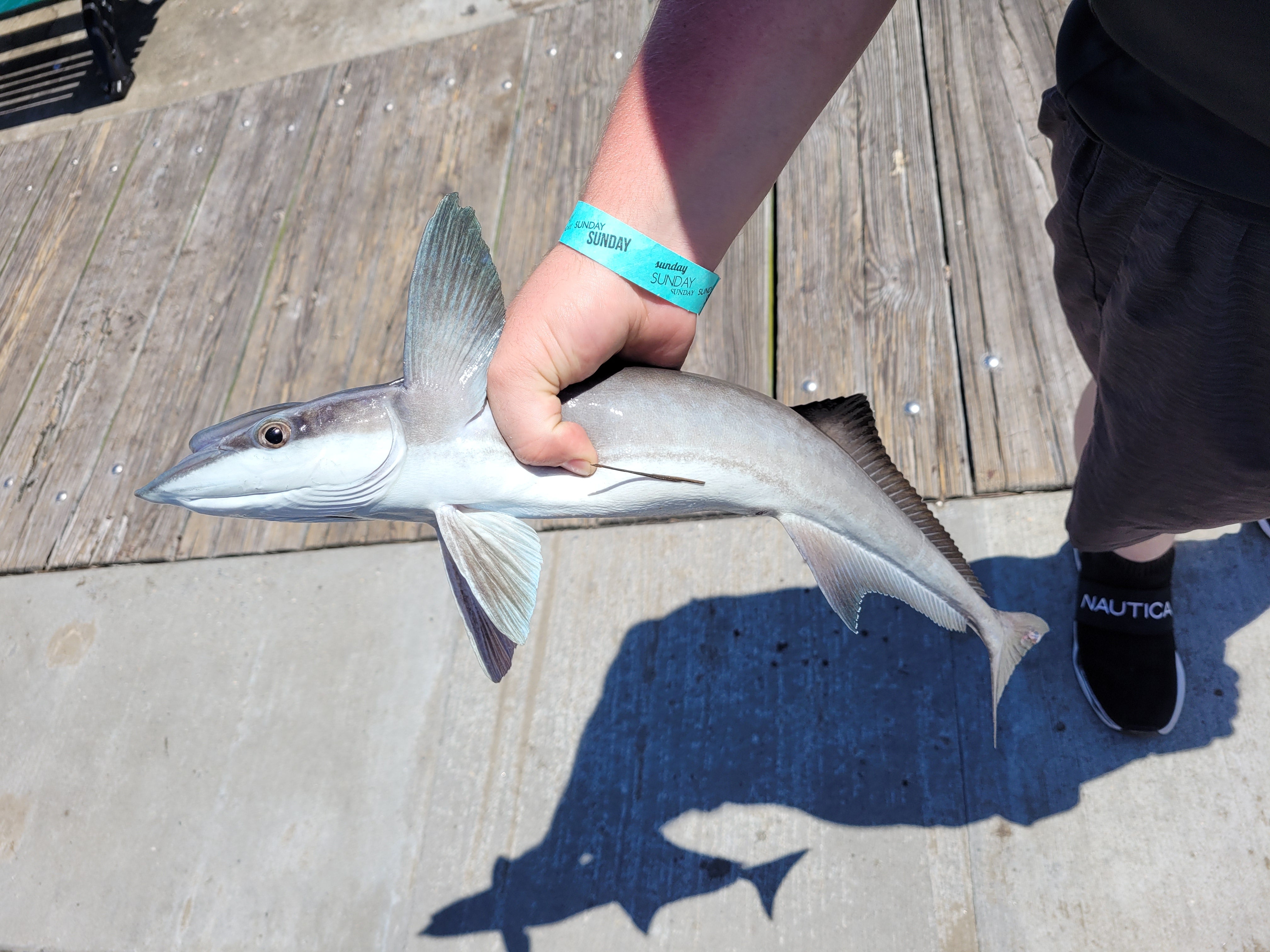
Tackle
You need a large strong spinning reel for targeting cobia, something capable of holding either a 25lb monofilament line or a 60lb braid. I use a Penn 706z and a Daiwa Catalina 5000 when I fish for Cobia, but anything in that size range will work. Van Staal Spinning Reels, Shimano Saragosas, and Penn Spinfishers are all very popular choices on the pier. Because of the long-distance casting that might be needed, I recommend a rod that’s at least 8 feet long. The rod has to be able to cast a 2 – 4oz cobia jig easily and accurately. Many local tackle shops have cobia rods made by local rod makers, these are a great choice for starting out fishing the pier.
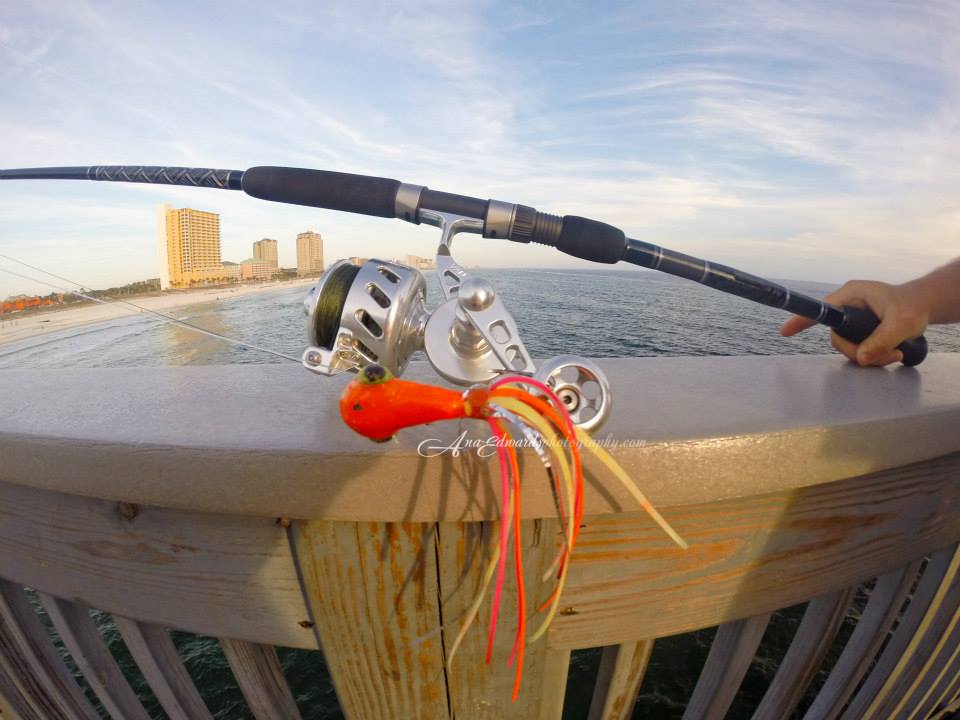
For terminal tackle, you need a cobia jig or two. They are flashy jigs usually 2 – 4oz available in a variety of colors and materials. They come in a lot of different head varieties as well with people swearing by their favorite jig head pattern. This should be tied onto an 80lb fluorocarbon leader probably 18″ in length. While they aren’t very line shy, the fluorocarbon is a bit harder than mono and holds up better to the rough teeth during a fight.
Technique
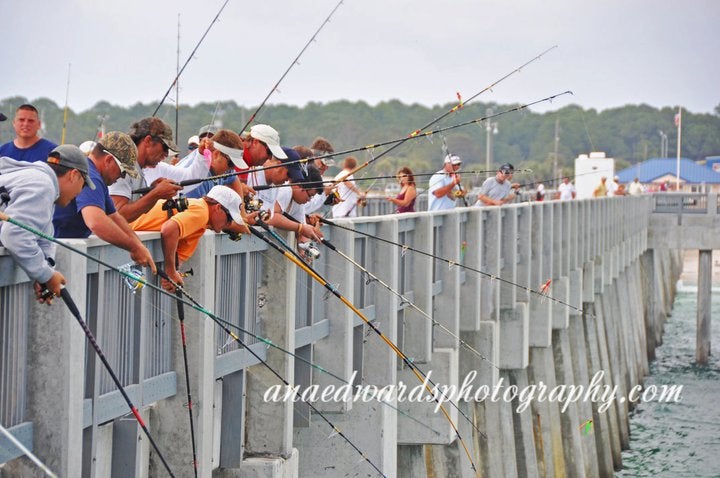
Cobia fishing from the pier is almost 100% a sight fishing technique. You scan the water to the east watching the farthest out you can see to look for a brown shape swimming down the beach towards you. You have to call “First Shot” on every Emerald Coast beach pier except Navarre. This tells everyone who’s fishing for cobia on the pier that you get to have the first throw on the fish. If you don’t follow the “First Shot” rule on the pier and cast on someone else’s fish expect a fight. And if you hook the fish, don’t expect any help landing the fish.
So, to aim the jig so it lands past the fish, if you drop the jig right on its head it will bolt. Then, work the jig near the surface of the water across the cobia’s path. If it’s hungry it’ll inhale the jig usually. Sometimes you’ll see the fish roll belly up on a jig. Then, set the hook and fight it to the pier. They don’t so much as run, but instead brawl and thrash when hooked.
Once the fight is done, and it’s by the pier, someone hopefully should have a cobia gaff or landing net ready. Listen to them, and work with them to land the fish. If they say point the rod this way or move a certain direction listen to them. Once it’s on the gaff or in the net, open up your bail in case the cobia flops off the tines of the gaff.
The other way cobia are caught on the pier is on a down rod on the west side of the pier. Sometimes cobia travel along the bottom out deep where they can’t be seen, then once they hit the pier they travel up and down the pier eating crabs and fish. So, you set a heavy combo with a live eel or crab on the bottom right next to the pier, and just hope a cobia comes by and eats it.
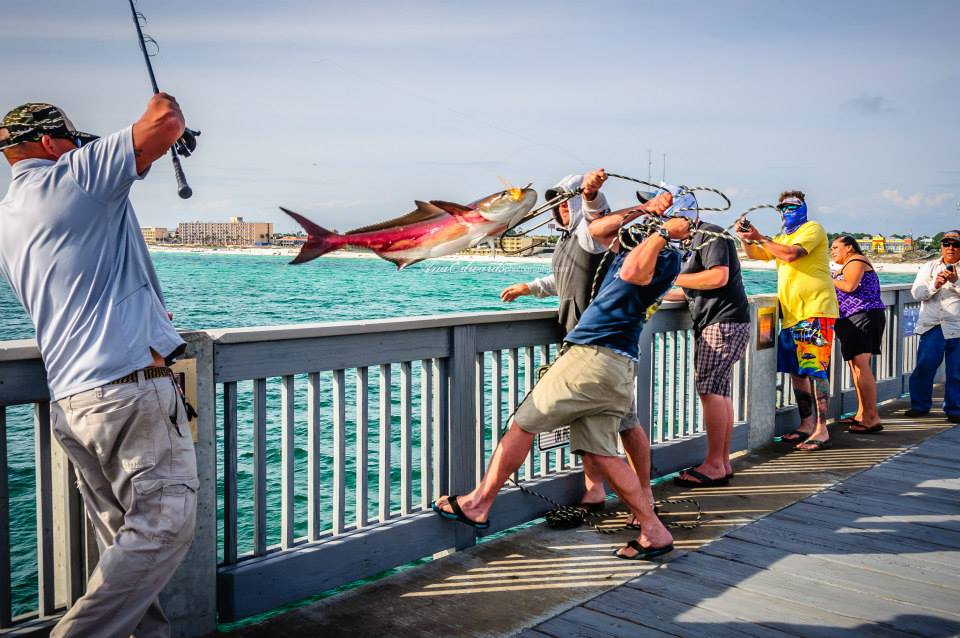
Table Fare
They are excellent for eating with firm white flesh that cooks up very nicely. They do well as sushi/sashimi, fried, blackened, baked, or broiled. Mild flavor except for the bloodline which takes whatever seasoning you use very well. Decent fat content in the meat, and breaks apart into very large flakes. Density is somewhat like that of salmon. A legal keeper-sized cobia will have plenty of meat left on the frame after it’s been filleted. So, please don’t throw it out, fry the bones. Broil the collars, use the head for stock or even broil the head.
Parting Words
Cobia is the most popular fish in spring for pier regulars. There are a lot of bragging rights and money involved in catching a pier cobia. Month-long tournaments for cobia with cash prizes and gear are held all over the gulf coast. The piers usually give a free year pass to whoever catches the first cobia on them. There are commercial guys out there who are catching cobia to sell. They have an incredible amount of pressure put on them. To the point where the spring cobia run is nowhere near what it used to be.
These fish are moving up the coast to reach their spawning grounds, and a lot are not making it, at least not along the gulf coast. The golden days of cobia fishing are behind us. If you ask any of the regulars who caught cobia back in the 90s and early 2000s, they’ll say the same. You would see wads of cobia running the beach, a bunch of 30 – 50lb fish following a 90 – 100lb fish. You could pass over a 50lb fish because you knew a big girl was out there. You’d never dream of doing that nowadays.
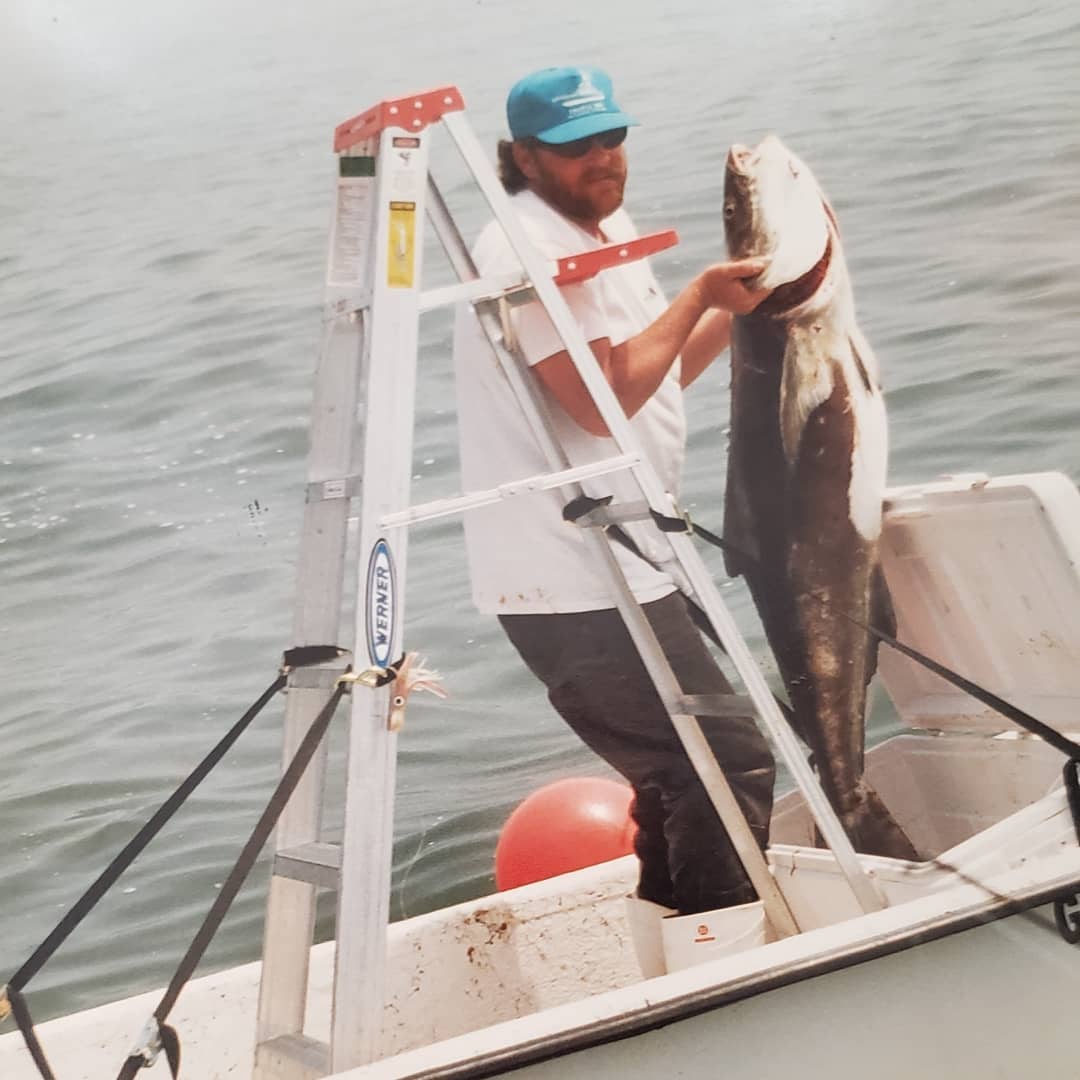
NOAA says the stock is in fine condition, but first-hand experience on the Emerald Coast is showing otherwise. Something has to be done for these fish and it has to be soon. I know it’s hypocritical of me to say this after killing two cobia this spring. But a moratorium might be the best option at this point. They are an incredibly rapidly growing fish, only needing a few years to get back on their feet.
So if you’re considering cobia fishing, just know please limit your kill. We want to have these monsters around for a long time so future generations can know what it’s like to see that brown log of fish swimming down the sandbar and shouting “FIRST SHOT” at the top of their lungs.